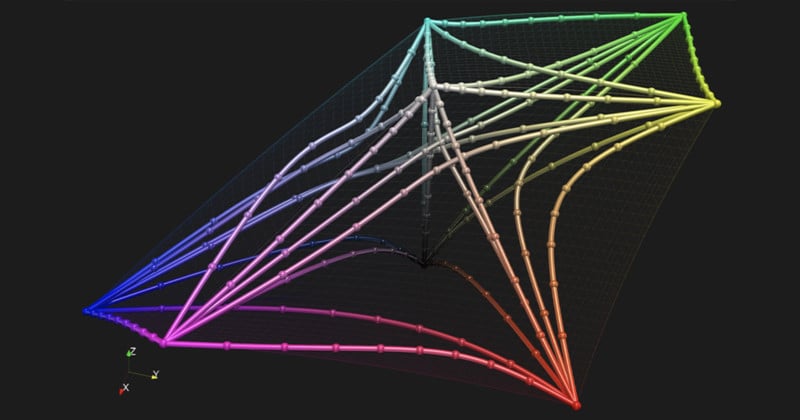‘Math Error’ Found in Foundation of Century-Old Color Theory
A new study has corrected the work of Erwin Schrödinger after an error was found in the famed physicist’s 3D math that describes how eyes distinguish one color from another.
A research team at Los Alamos National Laboratory has produced a paper that shows that the longheld “current mathematical model of how the eye perceives color differences is incorrect.”
The new mathematical representation has found that the line segments representing the distance between widely separated colors do not add up correctly with human color perception when using the previously accepted geometry.
The new discovery has the potential to create more vibrant monitors and screens, as well as printed materials and textiles.
“Our research shows that the current mathematical model of how the eye perceives color differences is incorrect,” explains Roxana Bujack, a computer scientist with a background in mathematics who creates scientific visualizations.
“That model was suggested by Bernhard Riemann and developed by Hermann von Helmholtz and Erwin Schrödinger — all giants in mathematics and physics — and proving one of them wrong is pretty much the dream of a scientist,” she tells the lab’s website.

Modeling human color perception enables automation of image processing, computer graphics, and visualization tasks.
“Our original idea was to develop algorithms to automatically improve color maps for data visualization, to make them easier to understand and interpret,” says Bujack.
However, the team was not expecting to discover that the longstanding application of Riemannian geometry, which allows generalizing straight lines to curved surfaces, didn’t work.
Models that use Riemannian geometry plot red, green, and blue in the 3D space because these colors are most strongly registered by a human’s retina and are also used on RGB computer screens.
Bujack and her colleagues discovered that Riemannian geometry overestimates the perception of large color differences. This is because people perceive a big difference in color to be less than the sum you would get if you added up small differences in color that lie between two widely separated shades. And Riemannian geometry cannot account for this effect.
“We didn’t expect this, and we don’t know the exact geometry of this new color space yet,” Bujack adds.
“We might be able to think of it normally but with an added dampening or weighing function that pulls long distances in, making them shorter. But we can’t prove it yet.”
Image credits: Photos courtesy of Los Alamos National Laboratory.